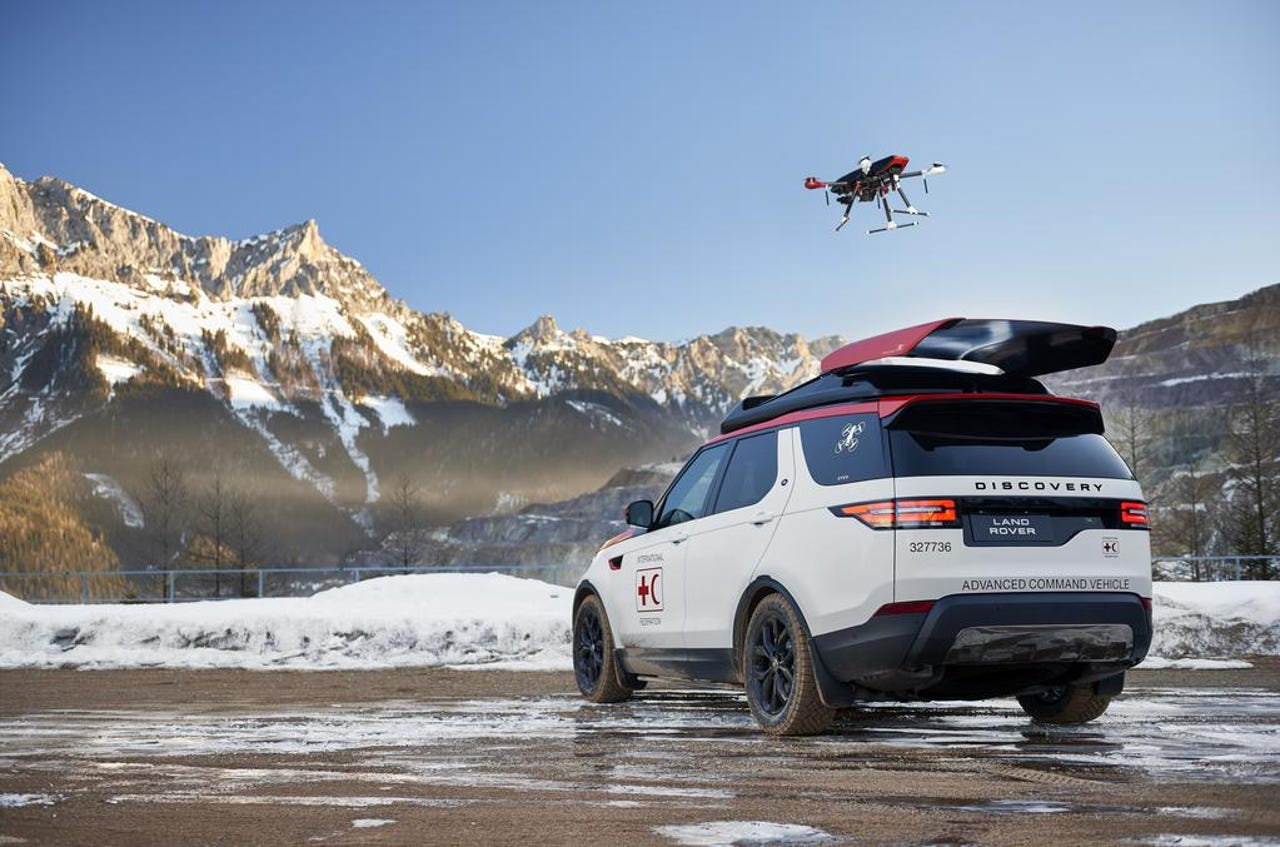Red Cross launches drones off Land Rover SUVs for disaster relief


Image: Land Rover
The Austrian Red Cross will start launching drones from Land Rover vehicles to cut response times for natural disasters such as avalanches, landslides, earthquakes, and floods.
Drones are potential delivery vehicles for the commercial sector, but they are also excellent tools for emergency relief. With the new system, dubbed Project Hero, first responders will be able to drive the all-terrain vehicles close to a disaster zone while a drone launches from the vehicle's roof to get an aerial view of the scene. This way, emergency crews can assess the situation and make a plan while viewing live camera footage from a safe distance.
Project Hero is similar to the Workhorse setup that UPS recently demonstrated, where a drone is mounted to the roof of a vehicle. While UPS plans to use drones to deliver packages to consumers, Red Cross will use them in emergency situations. Land Rover's version uses special magnetic retention and self-centering technology to enable the drone to land on a Discovery SUV, even when the vehicle is moving. Operators use a tablet app to control the drone, which launches and lands itself on the Discovery, where it can then be accessed through a sliding door.
Jaguar Land Rover Special Vehicle Operations (SVO) designed the roof-mounted drone system as part of a 64-year partnership with the International Federation of Red Cross and Red Crescent Societies (IFRC).
"Land Rover and the team of engineers and designers at SVO are proud to support the incredible humanitarian work of the IFRC and its members," said John Edwards, Jaguar Land Rover Special Operations Managing Director. "The new Discovery is an outstanding all-terrain SUV, and Project Hero is the optimum combination of enhanced capability and innovative technology. We hope to help the Red Cross save lives in emergency situations."
The drone is a Taiwanese Align M480L, which is moisture-resistant unmanned aerial vehicle that can fly for 20 minutes. It has a 12-pound payload capacity and it is equipped with clips to mount rescue equipment. The drone has been outfitted with multiple frequency radio equipment so that contact can be made even when traditional communication methods are unavailable.
Project Hero will be tested during a yearlong trial based at the Austrian Red Cross training center in the mountainous mining town of Eisenerz. Melissa Winkler, IFRC's senior officer of media and advocacy, tells us that the drone and additional equipment will be tested "initially in simulations of disaster scenarios such as avalanches where roads may be blocked, or in situations of extreme weather conditions where people may be stranded."
IFRC's emergency experts will also conduct trial flights. Winkler says, "They will be testing the drone's take off and landing capabilities; use in search, rescue and damage assessment; its mapping and communications capacities; ability to deliver light weight relief items to remote areas; and much more."
The drone will be put to the test with additional complications, such as flying at night and in dense forests. Ultimately, the Austrian Red Cross plans to use the vehicle and drone combination in real emergency situations, such as floods, landslides, and major snow storms.